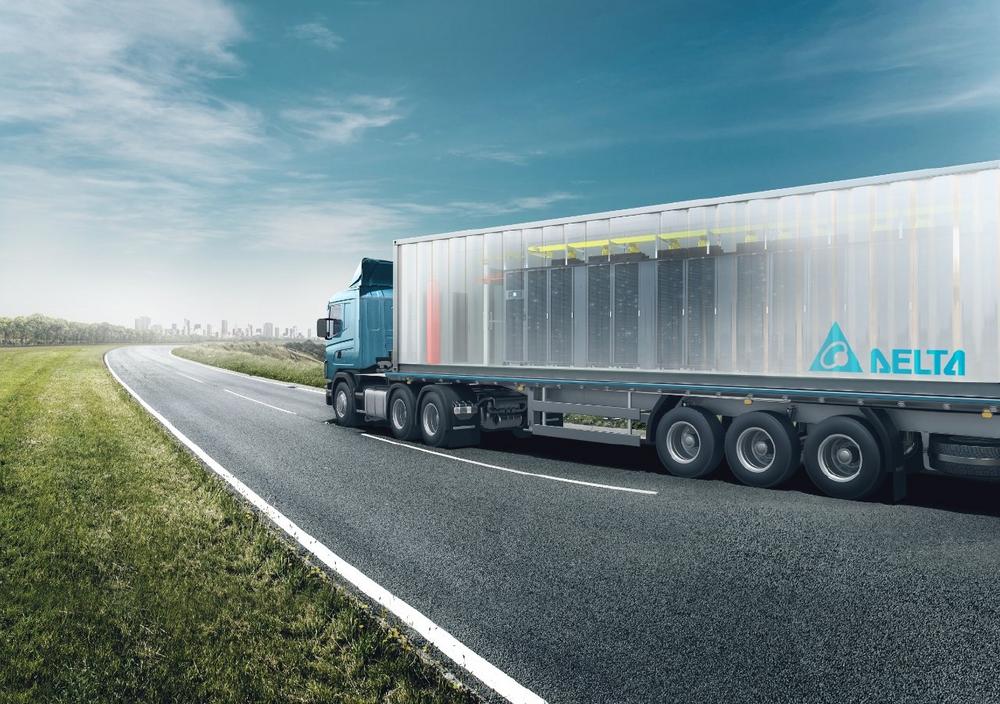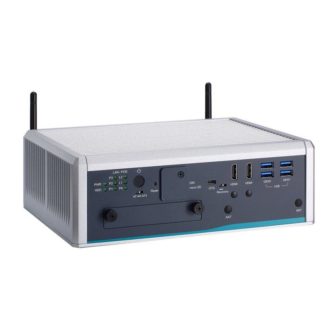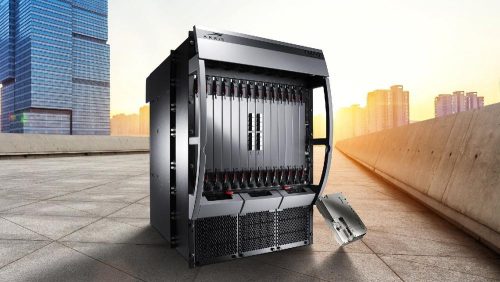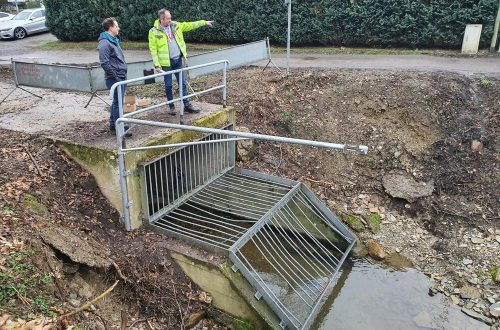
SmartNode Prefabricated Data Centres from Delta Enable Rapid Edge Computing Deployments for 5G and the Internet of Things
The dawn of the cloud era went hand-in-hand with the advent of the hyperscale data center. A lot of data moved from on-premise enterprise facilities to cloud. The advantages of having massive storage and compute resources concentrated at a single physical location include cooling efficiency and the ability to balance loads across many servers. But not every application can operate up to its potential given the latency and bandwidth limitations of the internet.
Enter the edge
Edge computing and the IoT will not make enormous, hyperscale data centers obsolete. Even though the trend is moving towards distributed data processing and storage, these new edge computing facilities will complement the cloud, not replace it. The idea is to handle as much of the now enormous quantity of data as close to where that data is generated as possible.
By limiting distances and hops between devices and the cloud resources that serve them, edge computing facilities reduce latency. They also ease the bandwidth constraints within which traditional cloud solutions must operate and provide additional compute resources. There are a host of new technologies on the horizon such as autonomous driving, augmented reality (AR), and virtual reality (VR) that will benefit greatly from edge infrastructure.
In VR applications, inputs such as hand motions, photons, and controller inputs need to be processed extremely rapidly to mimic reality. At the same time, many complex rendering processes are necessary to generate the virtual (or augmented) environment for the user. With processing loads this high, it’s difficult to include the required compute power inside the device itself. The answer is split processing, in which part of the computational or rendering load is handled in the edge-powered cloud instead of the AR or VR device itself.
The first wave: telecommunications and IT
As New Radio (5G) mobile communications networks are deployed around the globe, preparations for a massive increase in data traffic are also underway. There will be so much data, it will be impossible to process all of it from centralized data centers. That’s why telecommunications operators will be the first vertical to start deploying edge data centers at scale. In many major mobile networks, for instance, there are only a handful of wireless network interconnects for an entire country. Data can travel extremely long distances before it even gets an IP address. The ensuing latency would limit many of the services that 5G is being built to support.
The future of telecommunications infrastructure may therefore involve some RAN functions moving to data centers in areas where low-latency 5G services are available. This convergence with mobile edge compute could lead to a more unified approach to 5G architecture. Even with more edge computing capacity, more fiber will still be needed.
The IIoT and other verticals
In addition to telecommunications, many other industries will also be investing in edge computing. Manufacturing, for instance, is currently experiencing a revolution that includes smart factories, the Industrial Internet of Things (IIoT), and big data. In many cases, existing manufacturing facilities are not equipped to handle the amount of IT hardware necessary to power those increasingly essential applications. Most factory floors are no place for dust-sensitive servers and power equipment. Cloud solutions may not provide the ultra-low latency (ULL) required in a manufacturing context.
Edge computing carried in the form of modular data centers can be the answer to managing otherwise overwhelming IT loads. Instead of building an entire datacenter at a different location, a container can quickly be set up in a parking lot next to the factory, for instance. Healthcare, utilities, transportation, smart buildings, and smart cities are other fields in which edge computing enabled by prefabricated data centers makes sense. In most cases, improving application performance will be the main motivator behind the decision to invest. But many will also deploy compute resources to the edge to take advantage of real-time analytics or utilize streaming data.
Making edge computing a reality
Edge data centers serve to cache and aggregate data at points between users and larger data centers. Often, the goal is to push the edge out closer to users across a wide geographic region. Consequently, network operators and enterprises need affordable, reliable, and quick-to-deploy infrastructure, much like Delta’s new SmartNode Tier II and Tier III modularized data centers. It’s their agility and speed that allows prefabricated data centers to start contributing to revenue generation almost immediately. Break-even is reached much faster when compared to a conventional data center construction project.
Choosing a prefabricated data center
As with any other capital expenditure, choosing a vendor involves many factors. It’s always an advantage to work with a company that is on solid financial footing, especially during times of economic uncertainty. An ideal scenario is a diversified, global organization that can deliver and service the required number of datacenters practically anywhere in the world, much like Delta Electronics. It’s also beneficial when the vendor’s expertise goes beyond designing datacenters. The SmartNode from Delta, for instance, uses Delta power electronics, cooling, UPS, and data center infrastructure management (DCIM) technologies to offer a fully integrated, turnkey solution.
What SmartNode does best
Delta’s SmartNode solutions are available in five different capacities: 33kW, 35kW, 50kW, 70kW and 90kW. That’s sufficient flexibility for any edge computing scenario while still maintaining the production efficiency and rapid availability of a prefabricated solution. As a leading supplier of power electronics for the data center industry, Delta has of course used its own reliable and, in this case, innovative hardware; SmartNode data centers integrate power distribution right into the UPS to save space and keep total cost of ownership low.
Keeping cool while living on the edge
SmartNode data centers can handle up to 1,420 kg of equipment per rack. But to ensure maximum reliability and efficiency, you must keep IT hardware within its operating temperature range. That’s why these units are also designed to operate in climatic conditions ranging from -15°C to +48°C. The cooling system powerful enough to prevent derating up to temperatures of 39°C. To ensure this cooling performance is not interrupted, condensers are surrounded by a protective cage that prevents vandalism and damage during transit. Another contributor to SmartNode’s reliability is its robust construction and EI60 fire resistance.
Edging towards a distributed future
Leading consultancies are forecasting annual growth rates for edge computing of far above 20% for the coming five years. With its SmartNode range of prefabricated, modular data centers, Delta is meeting the demand for flexible, reliable edge computing solutions. As a trusted partner for data center infrastructure, the company is well-positioned to deliver the equipment that enterprises and telecommunications operators need to increase application performance as well as the capacity and resiliency of their networks.
Delta, founded in 1971, is a global leader in switching power supplies and thermal management products with a thriving portfolio of smart energy-saving systems and solutions in the fields of industrial automation, building automation, telecom power, data centre infrastructure, EV charging, renewable energy, energy storage and display, to nurture the development of smart manufacturing and sustainable cities. As a world-class corporate citizen guided by its mission statement, "To provide innovative, clean and energy-efficient solutions for a better tomorrow," Delta leverages its core competence in high-efficiency power electronics and its CSR-embedded business model to address key environmental issues, such as climate change. Delta serves customers through its sales offices, R&D centres and manufacturing facilities spread over close to 200 locations across 5 continents.
Throughout its history, Delta has received various global awards and recognition for its business achievements, innovative technologies and dedication to CSR. Since 2011, Delta has been listed on the DJSI World Index of Dow Jones Sustainability™ Indices for 8 consecutive years.
In 2017, Delta was selected by CDP (formerly the Carbon Disclosure Project) for its Climate Change Leadership Level for the 2nd consecutive year. For further information about Delta, please visit www.delta-emea.com.
Delta Electronics (Netherlands) B.V.
Zandsteen 15
NL2132MZ Hoofddorp
Telefon: +31 (20) 8003900
Telefax: +31 (20) 8003999
http://www.delta-emea.com/
Delta EMEA
Telefon: +31 (20) 65509-06
E-Mail: jwu@deltaww.com
Mepax
Telefon: +34 (619) 0277-78
E-Mail: m.depablos@mepax.com
![]()





